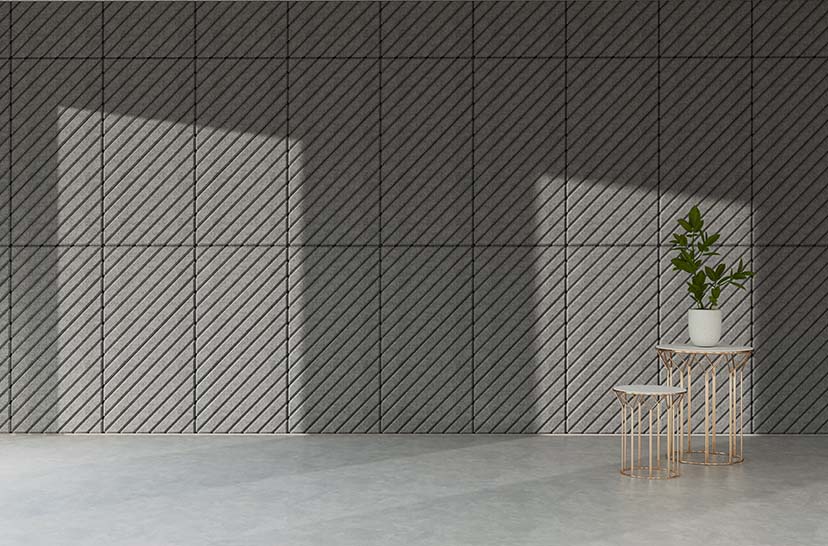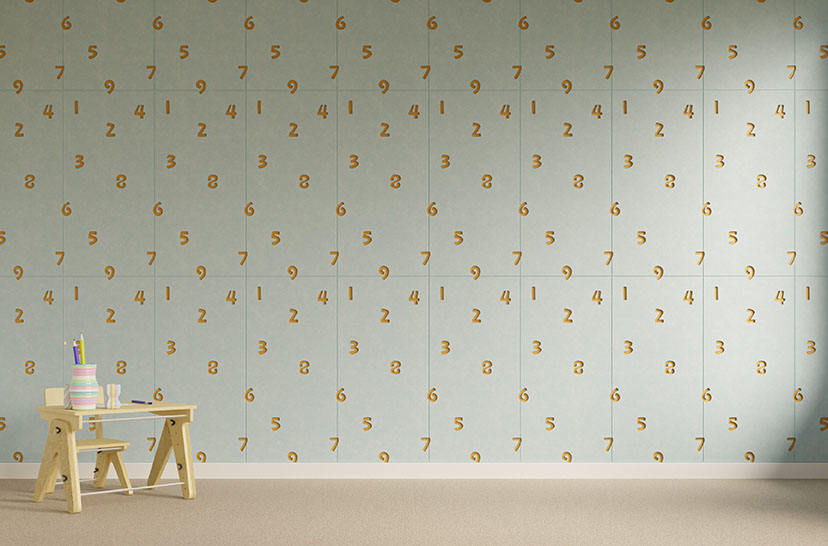18 mm Creative Panels

18 mm Creative Panels
Improve acoustics by covering walls with Creative panels. Chameleon Creative Panels are acoustic panels in a fixed size of 58 x 118 cm in more than 30 different designs. The Panels can be placed directly against the wall from the packaging. As a result, a large wall surface is covered quickly. In addition, the panels are easy to cut to make final parts fit.
Creative Panels
Creative Panels are acoustic panels in a fixed size of 58x118 cm.
Frequently asked questions about acoustic panels
Acoustic panels are specially designed panels used to dampen sounds in a space. They are often used in environments where excessive noise can be disruptive, such as offices, schools, theaters, auditoriums, and even in residential settings. Acoustic panels absorb sound, preventing it from reflecting or echoing in the space, thereby reducing reverberation and creating a quieter atmosphere. By reducing echo, speech intelligibility is improved, and noise disturbance is minimized.
Acoustic panels are made from materials with sound-absorbing properties. While various materials like foams, fiberglass, and textiles are available in the market, Chameleon utilizes acoustic PET felt. This felt structure consists largely of recycled PET bottles. PET felt offers good acoustic values and has a high-quality, warm appearance.
Acoustic panels are used for various reasons:
- Improving acoustics: By reducing reverberation and reflection, Chameleon acoustic panels contribute to better acoustics in a space. This can enhance the listening experience in environments such as offices and schools.
- Aesthetics: In addition to their functional benefits, Chameleon acoustic panels can also serve as decorative elements in a space. They are available in various colors, shapes, and textures, allowing them to be customized to the aesthetics of the space and even serve as artworks.
In summary, acoustic panels are used to improve overall acoustics, provide sound control, and enhance the aesthetics of a space.
Placing acoustic panels in an office space can help improve sound quality and create a comfortable working environment. Here are some strategies for placing acoustic panels in an office:
- Wall covering: Acoustic panels on the wall, also known as acoustic wall panels, often have good acoustic function concerning speech and general sounds. For example, choose to cover an entire wall with Chameleon acoustic PET felt. A beautiful pattern in PET felt also adds to the aesthetic value.
- Loose elements: Chameleon also offers wall-mounted elements. These hang as an acoustic artwork on the wall. By placing them, for example, near workstations, sound transfer between colleagues is reduced. This can be useful in open office environments where sound can easily travel.
- Ceiling acoustic panels: Hang acoustic panels above individual workstations or desks to reduce direct sound reflection from the ceiling. This helps improve speech intelligibility and reduces noise distraction for individual employees. Chameleon Divider Panels can be hung from the ceiling between workstations to break sound waves, allowing employees to concentrate better.
- On or in furniture: Chameleon acoustic panels can be easily incorporated into furniture: • Acoustic panels as cabinet doors • Acoustic panels on the back of a cabinet in the open space • Acoustic panels as partition screens between desks
The number of acoustic panels you need to place depends on various factors, including the size and shape of the room, existing furnishings, desired acoustic goals, and the properties of the panels used. Here are some considerations when determining the right number of acoustic panels:
- Room size: Larger rooms generally require more acoustic treatment than smaller rooms. For example, a room with high ceilings may require more panels than a room with lower ceilings. A rough rule of thumb is to use approximately one-quarter of the floor area as the number of square meters of acoustic panel surface that can be incorporated into the space. However, there are many other factors that make this rule not rigid.
- Acoustic goals: Determine which specific acoustic problems you want to address. For example, do you want to reduce reverberation, improve speech intelligibility, or decrease sound transfer between rooms? The desired goals will determine where and how many panels you need.
- Existing furnishings: It makes a difference whether a room is completely empty or fully furnished. For example, upholstered chairs, curtains, and books already absorb quite a bit of reverberation.
- Panel properties: The acoustic properties of the panels used play a role in determining the required number. Panels with higher sound absorption capacity will be more effective at reducing reverberation and reflections, potentially requiring fewer panels. For example, Chameleon offers PET felt panels of 9, 18, and 25 mm thickness. You can find the acoustic value of the panels in the spec sheets of the respective products. It is often helpful to consult an acoustic consultant who can assist in assessing the acoustic needs of your specific space and recommending the right quantity and placement of acoustic panels. This ensures that you implement an effective acoustic solution that meets the needs of your office space.
Our acoustic panels can be attached to the wall in two ways:
- Magnetic mounting: Our acoustic elements are equipped with magnetic mounting. This allows the acoustic panel to be reassembled and easily reset.
- Gluing: For wall-filling surfaces, the acoustic panels are glued to the wall. This is a permanent wall
Chameleon’s acoustic panels can be easily shortened manually. The 9 mm and 18 mm thick PET felt panels can be cut with a utility knife along a steel cutting ruler. Make sure the ruler is straight and gently run the knife along the ruler several times with some pressure. So do not cut through the felt at once, but in several strokes of the knife. The 25 mm panels of Chameleon are always fully pre-cut. If shortening is required, we will do this for you.
Sawing acoustic panels with a circular saw or other electrical equipment is not recommended due to melting of the product.
Need immediate help and advice with your choice?





